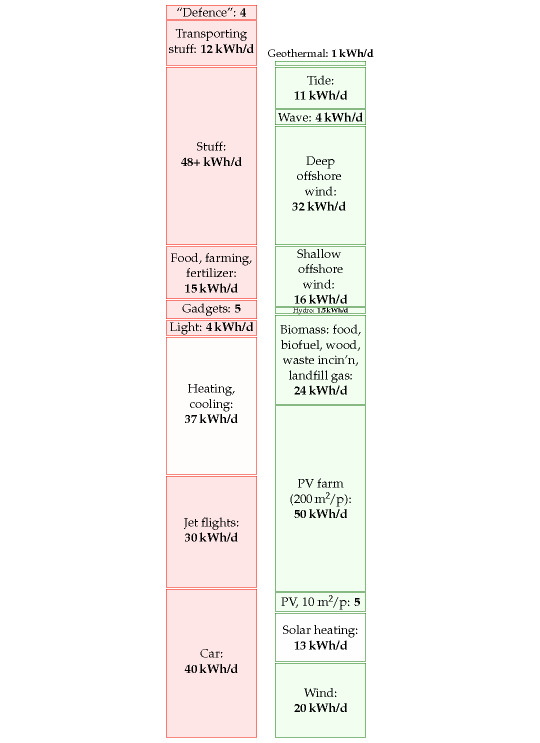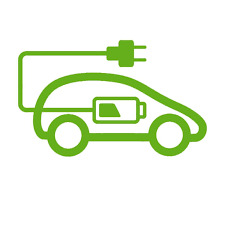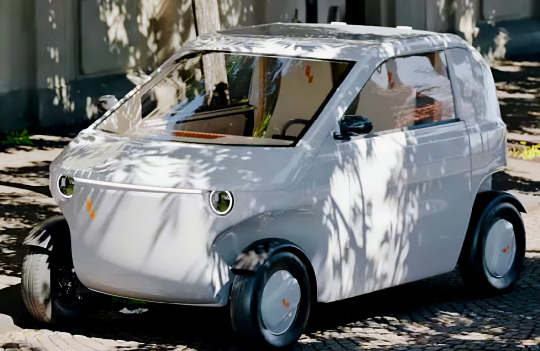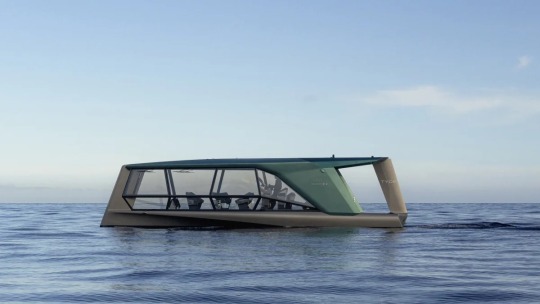#<100 kWh
Text
Second Life Electric Vehicle Battery Market Share, Size, Future Demand, and Emerging Trends
The rapid adoption of EVs over the coming decades will cause the accessibility of terawatt-hours of batteries which no longer match the requirements for use in an EV. To put this into perspective, countries like the U.S. consume several such terawatts of energy storage systems over the course of an entire year. Therefore, this is a significant amount of available energy storage.
Finding uses for these still functional batteries can add value significantly and ultimately help drive down storage costs to enable more integration of renewable energy into our grids.
Battery life for EVs is challenging. Lithium-ion batteries in EV usage deteriorate significantly within the first five years of operation and are often designed for a decade of usable life despite being exposed to severe operating temperatures, dozens of partial cycles annually, and fluctuating discharge rates.
Get More Insights: Second Life Electric Vehicle Battery Market Revenue Estimation and Growth Forecast Report
For instance, the EU aims to cut total CO2 emissions by 20% from 1990 levels by 2020 as part of the Europe 2020 plan. The U.S. has set a goal to cut its emission level from 2005 to 2025 by 26-28%. Due to all of these pollution standards, conventional cars are giving way to electric cars.
The numerous advantages of second-life EV batteries for the environment include the following:
• Decrease in mining and a rise in resource preservation to stop future mineral depletion and avoid emission- and energy-intensive processing of raw materials
• Decrease in environmental waste
• The practice of reusing materials after recycling
Additionally, prolonging battery life results in a smaller carbon impact and more renewable energy being used on the grid. Additionally, it lowers the cost of electric cars by converting the expense of waste disposal into residual value, accelerating the transition to renewable energy and starting a positive feedback loop for carbon reduction.
Conclusion
In comparison to the lifespan of the actual car, the batteries used for electric vehicles must be changed every four and five years. Additionally, the older battery still has between 60 and 80 per cent of its initial capacity after replacement, making it usable for a number of additional uses. In the upcoming years, this presents a significant growth opportunity for second-life batteries.
0 notes
Text
using aircon is a curse on us all man. My rent bill spiked so much i feel like getting hit by a bus. HELP!!!!!!
#post#me to my roommate: ok.... whos killing themselves first#Not the 100 kwh increase..... id kill myself
4 notes
·
View notes
Text
Audi RS6 E-Tron Avant: Elektrikli Performansın Yeni Temsilcisi
Audi RS6 E-Tron Avant: Elektrikli Dünyaya Merhaba
Audi’nin ikonik RS6 serisi, otomotiv dünyasında devrim niteliğinde bir değişiklik yaparak tamamen elektrikli versiyonu ile karşımıza çıkıyor. Audi RS6 E-Tron Avant, yolda test edilirken görüntülendi ve bu yeni model, elektrikli araç pazarında dikkat çekici bir yer edinmeye hazırlanıyor. Peki, RS6 E-Tron Avant neler sunuyor? İşte…
#100 kWh batarya#2025 çıkış tarihi#750 km menzil#800 volt#805 beygir gücü#Audi#elektrikli araç#hızlı şarj#otomotiv#RS6 E-Tron Avant#tasarım
0 notes
Text
LECAR - A montadora de veículos 100% NACIONAL. SERÁ?
LECAR – A montadora de veículos 100% NACIONAL | SERÁ? 4Rodas – 03 fev 2024
O Brasil está prestes a ter uma montadora de veículos 100% nacional, e nesse vídeo a 4Rodas te conta todos os detalhes dessa empresa.
Flávio Figueiredo Assis, fundador da Lecar, desenvolveu um carro elétrico nacional, mas com mecânica chinesa. O protótipo já tem modelos virtuais e até fevereiro poderá ganhar um protótipo…

View On WordPress
# Tesla Model S#baterias LiFeYPO 66 KWh fornecedor chinês Winston Battery#Camaçari Salvador Bahia#carro elétrico nacional mecânica chinesa#carro elétrico popular Lecar pop#Caxias do Sul Rio Claro Itupeva e Joinville#China importação#escritório Brascan Century Plaza Barueri (SP)#estrutura Sheet Moulding Compound (SMC)#estrutura tubular carroceria plástico reforçado fibra de vidro fibra de carbono#Fernando Italo - Folha de Pernambuco#Flávio Figueiredo Assis fundador da Lecar#LECAR - A montadora de veículos 100% NACIONAL | SERÁ? 4Rodas#Leo Fortunatti - InsideEVs#melhor produto 2016 Society of Plastics Engineers (SPE) Alemanha#O legado da Gurgel motors#prêmios internacionais de aplicação#projeto LECAR 459#projeto nacional profissionais indústria automotiva#segurança projeto do LECAR MODEL 459#superaquecimento#Totens Superchargers#veículos elétricos fabricante
0 notes
Text

QUANDO LA RAGIONE SI TRASFORMA IN FOLLIA E LA FOLLIA SUPERA IL LIMITE
La potenza impegnata per uso domestico è, di solito, 3 kWe. Un condominio di 100 famiglie impegna complessivamente una potenza di 300 kWe, che in un giorno (24 ore) diventano 7200 kWh, in un anno diventano 2628000 kWh (2628 MWh).
Se volessimo ricarica un'auto elettrica con batteria di capacità pari a 90 kWh, teorizzando un rendimento di ricarica dell'85%, avremmo di bisogno di 37.5 ore. Volendo ridurre i tempi di ricarica a poco più di 1 ora, avremmo di bisogno di una potenza impegnata di 105 kWe. Ma 105 kWe sono pari a più della metà del condominio e il tutto per una sola auto.
Facciamo finta che nel condominio di 100 famiglie tutti abbiano un'auto elettrica con batteria della capacità citata e il condominio ottiene il via libera per 100 stazioni di ricarica "media" da 105 kWe.
La potenza impegnata è pari a 105000 kWe, ovvero 105 MWe, ovvero 105 MWh di energia, ovvero quasi la potenza di un reattore nucleare modulare (SMR) come il Liong One cinese da 125 MWe!
Giusto per fare comprendere la proporzione, con 105 MWe si alimenta una città (senza industrie, naturalmente) di 35 mila abitanti! Adesso provate ad immaginare una città con, almeno, la metà del parco auto circolante di tipo elettrico e tante stazioni di ricarica dalla potenza di, almeno, 105 kWe.
Milano, inteso come Comune, conta su 1.4 milioni di abitanti, e con il 50% di 1807123 parco auto, le vetture elettriche sarebbero 903561. Volendo considerare che tutte le auto vengano ricaricate con colonnine rapide da ipotetici 105 kWe (in realtà si stanno diffondendo, insieme a quelle da 200 e oltre kWe, ma sono pochissime, la stragrande maggioranza sono da 36 kWe, ma noi agiamo ipoteticamente per consentire una ricarica in poco più di 1 ora), la potenza impegnata sarebbe di 948739605 kWe, pari a 94873,905 MWe, pari a 94,873905 GWe di potenza elettrica effettiva! Per giuste proporzioni, un reattore nucleare coreano APR-1400, dello stesso modello costruito in 4 unità negli Emirati Arabi Uniti, eroga una potenza massima netta di 1400 MWe, ovvero 1,4 GWe, e ne sarebbero necessari ben 68!
Qualcuno potrebbe obiettare: "Non è detto che tutte le auto si connettano contemporaneamente per la ricarica". Vero, ma la statistica dimostra, che la ricarica viene tendenzialmente effettuata nelle ore serali/notturne presso il proprio domicilio (in Italia per chi può permetterselo, in Germania e negli Stati Uniti è la prassi), più raramente presso le colonnine dislocate nei punti di ricarica urbani avviene di giorno. La statistica stessa ci viene incontro informandoci che ci sarà almeno una volta al giorno un momento in cui le auto possono essere collegate tutte insieme per la ricarica, e quella potenza va coperta, pena un inesorabile crollo delle linee e un prolungatissimo black-out che porterebbe dietro di sé, non la Lombardia, non l'Italia, ma l'Europa intera, date le interconnessioni transfrontaliere.
Ammesso che i cittadini si "accontentino" di ricaricare le proprie auto alla potenza massima di 3 kWe, sarebbero comunque necessari 2710683 kWe, 2710,683 MWe, 2,710683 GWe di potenza per ricaricare, in un tempo stimato di 38 ore circa, il 50% delle auto di Milano, quindi 2 reattori nucleari APR-1400.
Qualcuno afferma di volere ricaricare le auto elettriche, di giorno e con i pannelli FV. Torniamo all'esempio delle colonnine da 105 kWe, tanto il sole è gratis, giusto? I pannelli FV in condizioni standard hanno un rendimento del 13% (in termini largamente benevoli, perché raramente si arriva a superare il 10% reale...). Il 13% di rendimento è considerato come valore massimo in condizioni di perfetta perpendicolarità del pannello FV rispetto all'irraggiamento solare, alla temperatura di 25°C e al livello del mare. La variazione dell'angolo incidente, della temperatura e della pressione atmosferica riducono sensibilmente il rendimento effettivo...
Considerata la costante solare K = 1 kW * m-2, 1 metroquadrato di pannello FV erogherà una potenza massima di 130 Watt...
Per ottenere una potenza massima di uscita pari a 2,710683 GWe saranno necessari 20851407,692 m*-2 di pannelli fotovoltaici... credo le proporzioni, adesso, siano ben chiare! Continuare a fare conversazione su questi numeri, credo, sia inutile. Al netto degli impatti ambientali per la produzione delle batterie, dei pannelli FV, della loro installazione sul suolo, anche e solo parlare di elettrificare anche una parte del parco circolante di una città come Milano, figuriamoci del mondo intero, sia un qualcosa di improponibile, al netto, che senza reattori nucleari, la ricarica potrebbe essere assicurata per non più di 5,479 ore/giorno in media di irradiazione solare annue in Italia... Meditare, gente, meditare...
F. Arnò.
82 notes
·
View notes
Text
China’s state-owned power generation enterprise Datang Group said on June 30 that it had connected to the grid a 50 MW/100 MWh project in Qianjiang, Hubei Province, making it the world’s largest operating sodium-ion battery energy storage system.
The project represents the first phase of the Datang Hubei Sodium Ion New Energy Storage Power Station, which consists of 42 battery energy storage containers and 21 sets of boost converters. It uses 185 ampere-hour large-capacity sodium-ion batteries supplied by China’s HiNa Battery Technology and is equipped with a 110 kV transformer station.
Previously, the largest operational sodium-ion system was China Southern Power Grid’s Fulin 10 MWh BESS project, located in Nanning, southwestern China. The power station, which represents the first phase of a 100 MWh project, also features HiNa Battery’s cells.
2 Jul 24
The 100,000 kWh project in the Hubei province is capable of storing enough electricity to power 12,000 homes on a single charge.[...]
Sodium-ion batteries offer a number of benefits compared to conventional lithium-ion batteries, as they are both cheaper and safer than the batteries found in smartphones and electric cars.[...]
The sodium (Na) required to build them is also 500 times more abundant than lithium. while also holding the potential for greater charge and efficiency than Li-ion batteries.[...]
“Sodium-ion batteries have excellent safety and low-temperature operating performance,” said Cui Yongle, a project manager at Datang Hubei Sodium Ion Energy Storage.
“They can still guarantee 85 per cent charge and discharge efficiency at minus 20 degrees Celsius, which is unmatched by other batteries. They can also guarantee 1,500 charge and discharge cycles at a high temperature of 60 degrees Celsius. Their puncture resistance and impact resistance are much better than that of ordinary batteries.”
3 Jul 24
125 notes
·
View notes
Text
how much power does tech really use, compared to other shit?
my dash has been full of arguing about AI power consumption recently. so I decided to investigate a bit.
it's true, as the Ars Technica article argues, that AI is still only one fairly small part of the overall tech sector power consumption, potentially comparable to things like PC gaming. what's notable is how quickly it's grown in just a few years, and this is likely to be a limit to how much more it can scale.
I think it is reasonable to say that adding generative AI at large scale to systems that did not previously have generative AI (phones, Windows operating system etc.) will increase the energy cost. it's hard to estimate by how much. however, the bulk of AI energy use is in training, not querying. in some cases 'AI' might lead to less energy use, e.g. using an AI denoiser will reduce the energy needed to render an animated film.
the real problem being exposed is that most of us don't really have any intuition for how much energy is used for what. you can draw comparisons all sorts of ways. compare it to the total energy consumption of humanity and it may sound fairly niche; compare it to the energy used by a small country (I've seen Ireland as one example, which used about 170TWh in 2022) and it can sound huge.
but if we want to reduce the overall energy demand of our species (to slow our CO2 emissions in the short term, and accomodate the limitations of renewables in a hypothetical future), we should look at the full stack. how does AI, crypto and tech compare to other uses of energy?
here's how physicist David McKay broke down energy use per person in the UK way back in 2008 in Sustainable Energy Without The Hot Air, and his estimate of a viable renewable mix for the UK.

('Stuff' represents the embedded energy of manufactured goods not covered by the other boxes. 'Gadgets' represents the energy used by electronic devices including passive consumption by devices left on standby, and datacentres supporting them - I believe the embodied energy cost of building them falls under 'stuff' instead.)
today those numbers would probably look different - populations change, tech evolves, etc. etc., and this notably predates the massive rise in network infrastructure and computing tech that the Ars article describes. I'm sure someone's come up with a more up-to-date SEWTHA-style estimate of how energy consumption breaks down since then, but I don't have it to hand.
that said, the relative sizes of the blocks won't have changed that much. we still eat, heat our homes and fly about as much as ever; electric cars have become more popular but the fleet is still mostly petrol-powered. nothing has fundamentally changed in terms of the efficiency of most of this stuff. depending where you live, things might look a bit different - less energy on heating/cooling or more on cars for example.
how big a block would AI and crypto make on a chart like this?
per the IEA, crypto used 100-150TWh of electricity worldwide in 2022. in McKay's preferred unit of kWh/day/person, that would come to a worldwide average of just 0.04kWh/day/person. that is of course imagining that all eight billion of us use crypto, which is not true. if you looked at the total crypto-owning population, estimated to be 560 million in 2024, that comes to about 0.6kWh/day/crypto-owning person for cryptocurrency mining [2022/2024 data]. I'm sure that applies to a lot of people who just used crypto once to buy drugs or something, so the footprint of 'heavier' crypto users would be higher.
I'm actually a little surpised by this - I thought crypto was way worse. it's still orders of magnitude more demanding than other transaction systems but I'm rather relieved to see we haven't spent that much energy on the red queen race of cryptomining.
the projected energy use of AI is a bit more vague - depending on your estimate it could be higher or lower - but it would be a similar order of magnitude (around 100TWh).
SEWTHA calculated that in 2007, data centres in the USA added up to 0.4kWh/day/person. the ars article shows worldwide total data centre energy use increasing by a factor of about 7 since then; the world population has increased from just under 7 billion to nearly 8 billion. so the amount per person is probably about a sixfold increase to around 2.4kWh/day/person for data centres in the USA [extrapolated estimate based on 2007 data] - for Americans, anyway.
however, this is complicated because the proportion of people using network infrastructure worldwide has probably grown a lot since 2007, so a lot of that data centre expansion might be taking place outside the States.
as an alternative calculation, the IEA reports that in 2022, data centres accounted for 240-340 TWh, and transmitting data across the network, 260-360 TWh; in total 500-700TWh. averaged across the whole world, that comes to just 0.2 kWh/day/person for data centres and network infrastructure worldwide [2022 data] - though it probably breaks down very unequally across countries, which might account for the huge discrepancy in our estimates here! e.g. if you live in a country with fast, reliable internet where you can easily stream 4k video, you will probably account for much higher internet traffic than someone in a country where most people connect to the internet using phones over data.
overall, however we calculate it, it's still pretty small compared to the rest of the stack. AI is growing fast but worldwide energy use is around 180,000 TWh. humans use a lot of fucking energy. of course, reducing this is a multi-front battle, so we can still definitely stand to gain in tech. it's just not the main front here.
instead, the four biggest blocks by far are transportation, heating/cooling and manufacturing. if we want to make a real dent we'd need to collectively travel by car and plane a lot less, insulate our houses better, and reduce the turnover of material objects.
118 notes
·
View notes
Text
How Much Energy Does It Take To Generate An Image?
when liberals talk about the energy expenditure of generating images with ai i genuinely think that they believe its a wonka-gum-machine-esque contraption which like uses 8 bajillion gigawatts (random number because the number doesn't matter, to these people it's just shorthand for A Lot) of energy to produce 1 measly stupid joke image when like.
ok let's do some math real quick
a typical image-model "inference" i.e. specific image generation task takes about 0.003 kWh (kilowatt hours), or 2.9 kWh per 1,000 inferences

2. in comparison, an average iMac computer takes about 0.1 kWh to run

Let's be generous and say your Average Digital Artist who Has An iMac uses their computer for like. 3 hours? on a piece. The reality is much, much more, but let's be kind to our hypothetical digital artist and assume they have superhuman workflow.
In 3 hours, an Apple iMac computer will use 0.3 kWh to generate an image when used by a Digital Artist.
In comparison, for 1 image, an image generation AI model will use .003 kWh to generate an image.
0.3 > .003
By how much?

So, generously, an AI image generation model is 100 times more energy efficient at making an image than a digital artist.
Not to mention that many computers (like gaming laptops) use more energy than an iMac, and most artists take longer than 3 hours on a piece.
I'm not saying this to say that "we need to ban digital artists from using imacs." but rather to illustrate how stupidly inane this whole argument is.

Fun fact: running a gaming PC for the same amount of time as it takes to generate an AI image (bcz kwh are units of energy over time) will use 166 times more energy than that AI image.
So I guess we're all going to start a fascist crusade against gamers, right? I mean, since you all are all gung-ho about how bad AI image generation is because of it's energy consumption?
59 notes
·
View notes
Text

Quando vi fanno i calcoli su costo a kWh dell'energia elettrica, i venditori di auto elettriche vi parlano di 0,2 €/kWh.
In effetti se prendete la bolletta risulta la voce costo a kWh di circa 0,2-0,25 €/kWh.
Allora hanno ragione?
Leggete oltre nella bolletta e scoprite una serie di altre voci, tasse varie, che portano il totale a una cifra più che doppia rispetto al consumo.
Cosicché il costo vero diventa di 0,4-0,5 €/kWh
Adesso rifate i conti su quanto costa fare 100 km con l'elettrica e con quella a benzina o diesel. Vi accorgerete che il costo è di pochissimo inferiore.
Metteteci che l'elettrica l'avete pagata il 30% in più e aggiungete i tempi persi per la ricarica.
Vi darete del coglione.
(Critica Climatica)
133 notes
·
View notes
Text
120kW of Nvidia AI compute
This one rack has 120kW of Nvidia AI compute power requirements. Google, Meta, Apple, OpenAI AND others are buying these like candy for their shity AI applications. In fact, there is a waiting list to get your hands on it. Each compute is super expensive too. All liquid cooled. Crazy tech. Crazy energy requirements too 🔥🤬 All such massive energy requirements so that AI companies can sell LLM from stolen content from writers, video creators, artists and ALL humans and put everyone else out of the job while heating our planet.


To add some context for people on what 120kW means…
An average US home uses 10,500kWh per year, or an average of 29kWh per day. This averages out at 1.2kW.
In other words, if that server rack runs its PSU at 100%, it’s using as much power as 100 homes. In about 6sqft of floor space. Not including power used to cool it. The average US electricity rate is around $0.15/kWh. 120kW running 24/7 would cost $13,000 per month. Compare that to the electricity bill for your house. (Thanks, Matt)
49 notes
·
View notes
Text

Mercedes-AMG ONE „F1 Technology for the Road“.
Affalterbach. Mercedes-AMG ONE (combined weighted fuel consumption: 8.7 l/100 km; combined weighted CO2 emissions: 198 g/km; combined weighted electrical consumption: 32 kWh/100 km)[1].
Exceptional E PERFORMANCE hybrid drive with 1.6-litre V6 engine and four electric motors.
The E PERFORMANCE hybrid drive of the Mercedes-AMG ONE comes directly from Formula 1 and has been realised in close cooperation with the experts at Mercedes-AMG High Performance Powertrains in Brixworth.
It consists of a highly integrated and intelligently networked unit comprising one hybrid, turbocharged combustion engine with a total of four electric motors. One has been integrated into the turbocharger, another has been installed directly on the combustion engine with a link to the crankcase and the two remaining motors drive the front wheels.
The high-revving power unit is boosted by a high-tech turbocharger. The exhaust gas turbine and compressor turbine are positioned at a distance from each other and connected by a shaft. This allows a lower installation position for the turbocharger.
On the shaft is an approx. 90 kW electric motor. Electronically controlled, this drives the turbocharger shaft directly, accelerating the compressor wheel up to 100,000 rpm before the exhaust gas flow takes over. The Formula 1 designation for this unit is MGU-H (Motor Generator Unit Heat).
Mercedes-AMG One man, one engine Handcrafted by Michael Kübler @f1mike28 in Germany Affalterbach.
Driving Performance is our Passion! Mercedes-AMG the Performance and Sports Car Brand from Mercedes-Benz and Exclusive Partner for Pagani Automobili. Mercedes-AMG Handcrafted by Racers.
#amg#amgone#amgprojectone#one#projectone#mercedesamg#mercedes#mercedesbenz#mercedesamgf1#affalterbach#onemanoneengine#f1technology#f1engine#f1#techology#pagani
16 notes
·
View notes
Text




Luvly O, 2023. A Swedish start-up has created a micro EV that can be shipped like flatpack furniture and has a starting price of €10,000 (£11,000). From the factory 20 O units can be packed into a container, the cars are then assembled at small local factories which act as distribution centres. Luvly claim it uses up to 80% less energy for production than a regular EV, is fully recyclable and can be manufactured from renewable materials. It's compact dimensions (2.7 metres long) and lightweight (400kg) mean it requires only a 6 kWh battery to provide a range of 100 km
order one here
179 notes
·
View notes
Photo







“THE ICON”
THE ICON is a new kind of flag bearer for sustainable water mobility. 13.15 meters long and with a maximum speed of 30 knots (55 km/h), THE ICON is the pioneer of a new type of watercraft with battery electric propulsion.
The vessel is equipped with a pair of 100 kW electric motors that convert 240 kWh of energy, supplied by six batteries from the BMW i3, into an impressive range of more than 50 nautical miles (about 100 km).
Courtesy: DesignWorks (BMW) and TYDE
#art#design#boat#icon#BMW#tyde#lounge#luxurylifestyle#sustainability#watercraft#e-craft#i3#sea#ocean#travels#origami#hydrofoil#marine#transportation
136 notes
·
View notes
Text
La Grande truffa elettrica:
Faccio spoiler di un paio di aspetti per i pigri:
"costo a km di una ricarica domestica = € 0,122 (€ 20,80 ÷ 170km = € 0,122)
- costo a km di una ricarica pubblica = € 0,217 (€ 35,60 ÷ 170km = € 0,209)
- costo a km di un pieno di benzina = € 0,109 (€ 74,40 ÷ 680km = € 0,109)
- costo a km di un pieno di Gpl = € 0,052 (€ 29,44 ÷ 560km = € 0,052) ."
( Per Un viaggio di 3 ore con auto termica, ne servono 6 con auto elettrica calcolando tempi di ricarica) . E per furgoni e tir , qualcuno mi spieghi come si farà a lavorare o con che costi... )
Evviva l’auto elettrica!
"Da un anno sono possessore di una auto Full Electric di ultima generazione: una Peugeot E-208 con una batteria da 50 KWh.
Mi sono fatto convincere dalle fandonie raccontate sul fatto che le auto elettriche sarebbero molto più convenienti di quelle con motore termico. Ebbene, posso dire con certezza, scontata sul mio portafogli, che le auto elettriche sono una colossale fregatura.
L'Unione Europea, non ho ben capito con quale logica e per quale interesse, spinge fortemente per la conversione totale della mobilità dal termico all'elettrico. I principali argomenti per convincere gli utenti a passare all'elettrico sono la scelta ecologica ed il risparmio.
Quanto alla valenza ecologica dei motori elettrici, non ho gli elementi per affermare se sussiste veramente ma ho seri dubbi anche in considerazione dell'enorme problema relativo allo smaltimento delle batterie esauste.
Per quanto riguarda invece la assoluta antieconomicità delle auto elettriche, e, problema di non secondaria importanza, la loro faticosissima fruibilità, ebbene qui ho solo certezze, raggiunte dopo un anno di calvario, sia pratico che economico.
Innanzitutto voglio spendere una parola sulla indegna malafede speculativa rappresentata dal costo addebitato all'utente per la energia erogata dalle colonnine pubbliche.
A fronte di un costo medio della energia domestica pari ad € 0,52/KWh, ho dovuto riscontrare che per le ricariche alle colonnine pubbliche viene praticato un costo pari ad euro 0,89/KWh, ovvero quasi il doppio.
Riguardo poi alla infruibilità delle auto elettriche, faccio presente che i motori elettrici di nuova generazione necessitano di batterie con una capacità di almeno 40kwh, che, a causa della rilevanza di tale capienza, necessitano di essere ricaricate quasi esclusivamente presso i punti di ricarica veloce visto che, con una ricarica lenta, per raggiungere il 100% ci vorrebbero almeno 14 ore.
Quindi il problema della scarsissima disponibilità di punti di ricarica pubblici viene enormemente acuito dalla necessità di accedere esclusivamente ai punti di ricarica veloce, che sono circa il 20% della totalità.
Da ciò deriva che se devi fare un viaggio, o ti prendi due giorni per fare 400 km oppure ti fermi almeno un paio di volte per ricaricare nelle postazioni di ricarica veloce, con una attesa per ogni ricarica di minimo un'ora (purtroppo anche la storia che con 20 minuti si raggiunge l'80% della ricarica è un'altra fandonia: ce ne vogliono almeno 40).
Si aggiunga poi che sulla rete autostradale italiana i punti di ricarica veloce sono rarissimi, il che significa che ogni volta che si ha bisogno di ricaricare si deve uscire dall'autostrada e percorrere a volte diversi chilometri aggiuntivi per raggiungere la postazione.
In sostanza un viaggio che con un motore termico richiederebbe tre ore di percorrenza, con un motore elettrico, se si è fortunati a trovare le colonnine funzionanti e libere, se ne impiegano almeno sei!
Veniamo ora alla tanto sbandierata "economicità" delle auto elettriche.
Mettiamo a paragone una piccola utilitaria con batteria da 40kWh ed autonomia di 170 km (che è la reale autonomia su percorso extraurbano rispettando i limiti di velocità, alla faccia della autonomia di 350 km dichiarata dalla casa), con la stessa utilitaria con motore termico a benzina e Gpl:
A) un "pieno" di energia effettuato collegandosi ad una utenza domestica costa € 20,80 (€ 0,52 x 40kwh = € 20,80);
😎 un "pieno" di energia effettuato collegandosi alle colonnine pubbliche costa € 35,60 (€ 0,89 x 40kwh = € 35,60);
C) un pieno di 40 litri di benzina costa € 74,40 (€ 1,86 x 40lt = € 74,40);
D) un pieno di 40 litri di Gpl costa € 29,44 (€ 0,736 x 40lt = € 29,44).
Nel paragone va considerato un "piccolo particolare": con un pieno di energia si percorrono al massimo 170 km, mentre con un pieno di benzina si percorrono almeno 680 km (considerando un consumo medio di 17 km/l) e con un pieno di Gpl se ne percorrono 560 (calcolando un consumo di 14 km/l).
E qui casca l'asino:
- costo a km di una ricarica domestica = € 0,122 (€ 20,80 ÷ 170km = € 0,122)
- costo a km di una ricarica pubblica = € 0,217 (€ 35,60 ÷ 170km = € 0,209)
- costo a km di un pieno di benzina = € 0,109 (€ 74,40 ÷ 680km = € 0,109)
- costo a km di un pieno di Gpl = € 0,052 (€ 29,44 ÷ 560km = € 0,052).
Quindi, tirando le somme, un pieno di carica elettrica alla colonnina costa il quadruplo di un pieno di GPL.
Il tutto senza considerare che una auto elettrica costa il 30% in più rispetto ad una pari modello termica e che una auto termica può durare anche 15 anni mentre una auto elettrica all'esaurimento delle batterie o della garanzia sulle medesime(dopo non più di 8 anni) vale zero.
Alla faccia delle "scelte ecologiche" per le quali subiamo pressioni da anni: facile così, tanto paga Pantalone.
A questo punto si può giungere ad una sola conclusione: va bene il Green, il rispetto dell'ambiente, l'etica ambientalista, va bene tutto, ma non a spese nostre, non costringendoci a spendere il quadruplo, e, soprattutto, non speculandoci sopra perché quando si tratta di mettere mano al portafogli la gente non è stupida".
(Da un utente del WEB)
PS 1: era scontato, le premesse ci stavano tutte ma in pochi ci "arrivavano", l'auto del futuro sarà per pochi eletti, si creerà un ulteriore distanza netta fra le caste e indovinate quale sarà quella sottomessa? ...
PS 2: per alimentare tutt' Italia,case private, industrie, auto, chi sa fare i conti dichiara che serviranno per restare green almeno 12 centrali nucleari... Quindi? Come faranno/ faremo?
PS3: in pochi sono preparati a spegnere gli incendi delle auto elettriche (che non sono pochi) , visto che servono attrezzature a parte adeguate, e in pochi meccanici ci sanno ancora mettere mano.
190 notes
·
View notes
Text
Peter Halligan
Sep 06, 2024
Once again demonstrating the lunacy and vindictiveness of the lunatic left that has taken over the UK, check this little nugget out from the excellent Expose-news.com team.
Labour’s masterplan to defund pensioners so the UK Government can fund offshore wind projects – The Expose (expose-news.com)
Yep, you read that right. The UK’s Secretary of State for Energy Security and Net Zero has determined that the poorest old age pensioners in the UK that currently receive a little relief from the current disastrous energy policies of the UK, will lose that relief, making them insecure, in order for the moronic Milliband to waste money to pursue the pipe dream of Net Zero.
Brutal, c0mpletely lacking in compassion, intelligence and common sense.
You will recall that the UK just had an auction where the “winner” agreed to pay a record CFD (Contract for Differences) auction price of 82 pounds – around 100 bucks – per mWh. The “winner” has bought the electricity from offshore wind at that price – it will charge consumers at least double, probably triple, that price, in order for wind farm operators to price gouge and to make a handsome profit
It may be that the new Labour Chancellor has limited the budgets of each Government department, so…
From here:
UK jacks up energy prices – because renewable costs have increased – a tax increase by any other name. Not from natural gas, but from the soaring costs of renewable electricity - works like Obamacare! (substack.com)
UK households already pay 4 times the cost per kWh for electricity than for natural gas – whose futures price is back to where it was prior to the Russian invasion of Ukraine,
6 notes
·
View notes